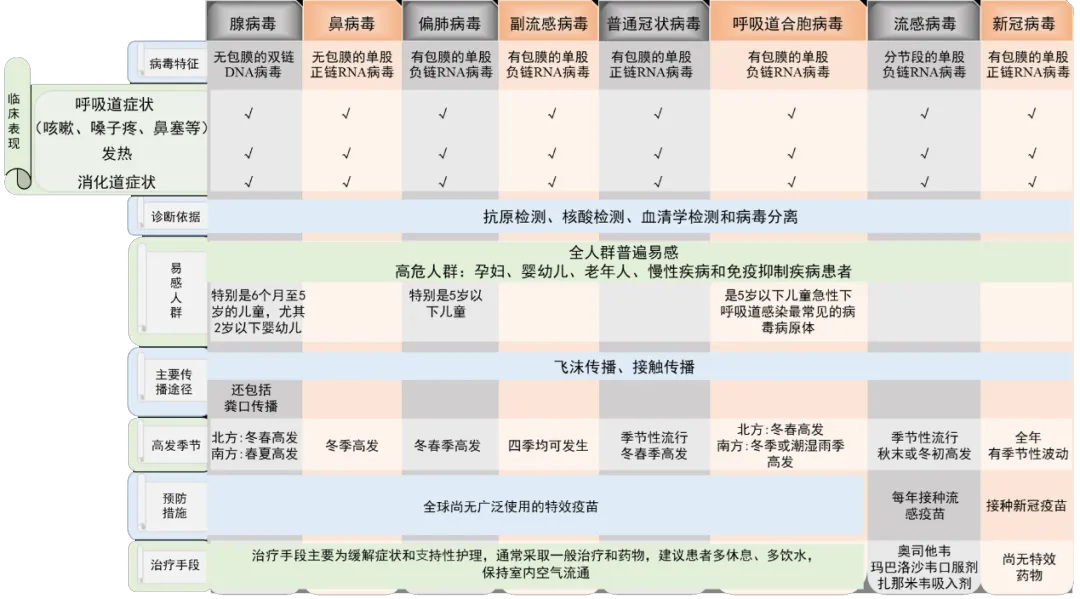After beginning of spring, you should still be alert to respiratory virus infection!
After beginning of spring, the footsteps of spring came quietly. When it was warm and cold at first, the frequency of activities of traveling together and reuniting with family and friends also increased. When everything recovers, there are more opportunities for respiratory viruses. How to avoid being "disappointed" by them?
Let’s "unveil" those respiratory viruses together today to see who they really are, how to prevent them and how to deal with them!
What is respiratory virus?
When it comes to respiratory viruses, simply speaking, they are those viruses that are "good at" spreading through air, droplets or contact and "doing things" in our respiratory tract. They may not only make us cough, fever, sore throat and runny nose, but also cause other discomfort, such as fatigue, and even spread to other organs.
What are the "familiar face" respiratory viruses?
Don’t think that only the influenza virus and Covid-19 are the "protagonists". In fact, there are many "roles" active in this "respiratory drama":
Adenovirus: good at "messing up" the throat, lungs, eyes, and sometimes diarrhea;
Rhinovirus: a frequent visitor to the common cold, likes to make you sneeze and have a runny nose; It can also cause serious infections such as pneumonia;
Parainfluenza virus: its "specialty" is to make children have laryngitis and cough;
Respiratory syncytial virus (RSV): especially loves to "find trouble" for infants and young children, which is easy to cause bronchiolitis or pneumonia;
Common coronavirus: it will also make you catch a cold. Although it is not so "famous", it should not be underestimated.
Influenza virus and Covid-19: Needless to say, their "fame", protect key targets!
The symptoms after being infected with these viruses are sometimes very similar, such as nasal congestion, cough and fever, so it is really difficult to judge which virus is "responsible" by symptoms alone. In addition, all you need to know about the clinical manifestations, transmission routes and preventive measures of common respiratory viruses are in the following picture.

How to stay away from these respiratory viruses?
If you want to make these respiratory viruses impossible, you must remember the following tricks:
Keep your hands clean: Wash them with soap or hand sanitizer for at least 20 seconds, or use alcohol-based hand sanitizer. Don’t rub your eyes, nose and mouth with your hands.
Wear a mask scientifically: In crowded places, when visiting a doctor or taking public transportation, a mask is a good helper to prevent viruses.
Healthy lifestyle: balanced diet, moderate exercise, adequate rest and enhanced immunity.
Regular ventilation: let the air in the house circulate, and there are fewer viruses in the fresh air.
Active vaccination: Vaccinate against influenza every year and COVID-19 vaccine as needed, especially for high-risk groups such as the elderly, children, pregnant women and patients with chronic diseases, and build a "protective wall" for themselves.
What if I get infected?
If you accidentally get caught, don’t panic. The following "coping tips" can help you:
General treatment: rest more, drink more water and keep indoor ventilation. Most respiratory virus infections are self-limited and will be cured in 7-14 days.
Symptomatic medication: For example, you can use antipyretics when you have a fever, but remember to follow the doctor’s advice!
Seek medical attention in time: If you are elderly, children or people with weak immunity, don’t delay when the symptoms are serious, and go to the hospital for examination!
Pay attention to the health of family members, especially the elderly and children, and take scientific and reasonable protective measures to make the virus have nowhere to hide! With this knowledge, you can easily cope with these "small respiratory troubles", have a happy spring outing and come home healthy!
Authors: Institute of Virology, Yang Fuying, Feng Yedong, Chen Cao.
Audit: Han Jun
Editor: Liu Xiaolu, Zhang Linlin
Producer: Yao Jianyi and Yu Zihan.
Source: China CDC